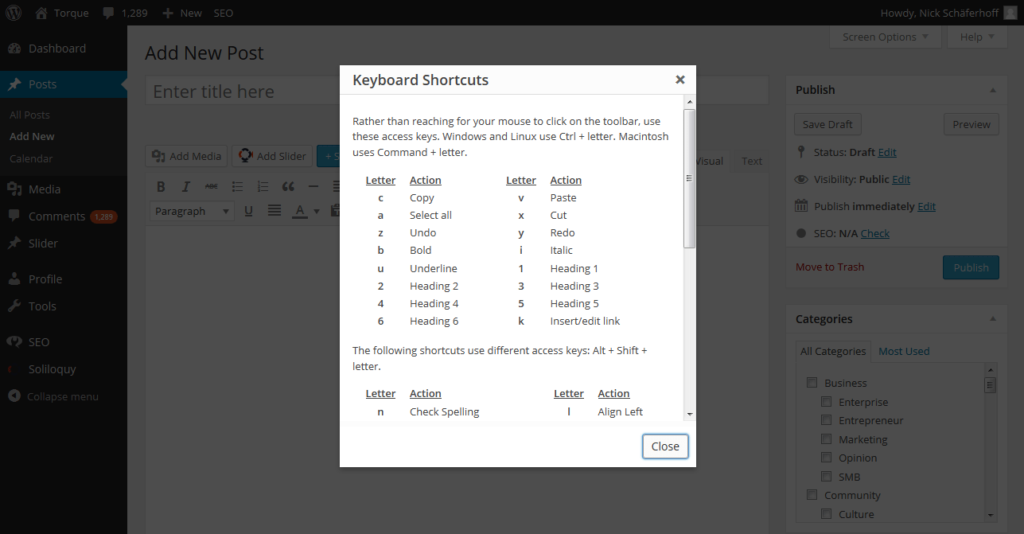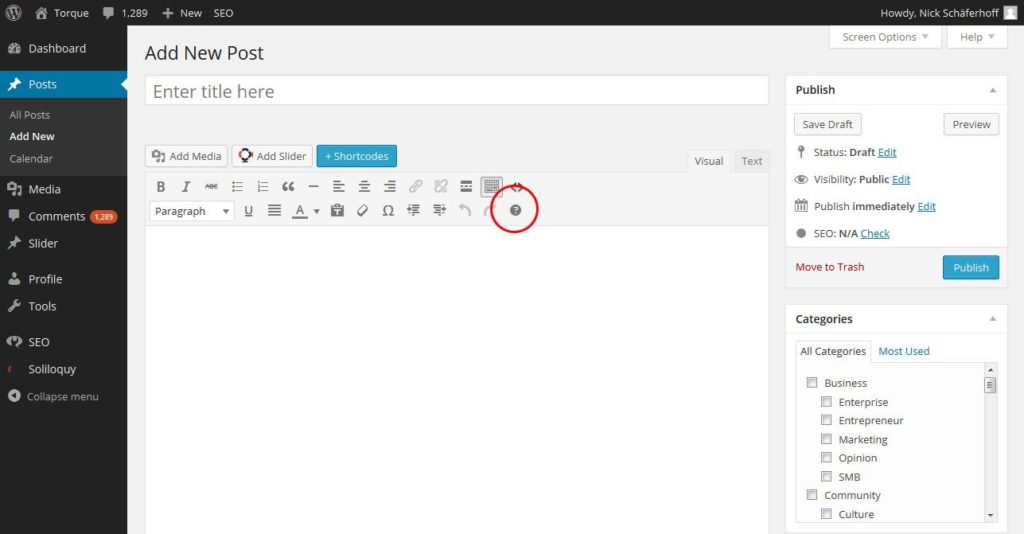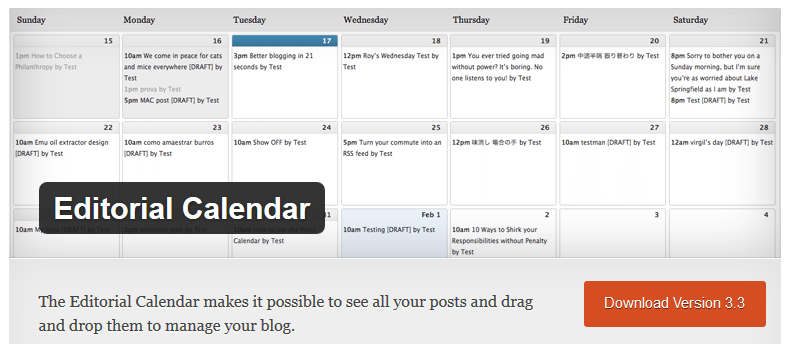Running a website, or blog, or online business is not always a cakewalk. There is always something to do: Content creation, marketing, maintenance, not to mention updates and website changes. You could easily work 24/7 — in fact, many of us attempt to do so.
Even though WordPress makes maintaining an online presence quite comfortable, there are only so many hours in the day you can actually be productive (without seriously impairing your health and social life that is). Therefore, it is important to find ways of making the most of the time you have.
Luckily, there are steps you can take to become more effective and efficient in your everyday tasks, speed up the content creation process and overall cutdown on the time it takes to maintain your website. The productivity tips for WordPress bloggers below will attempt to show you just how.
You up for it? Good, let’s get going then.
General tips for more focus and productivity
Before we get into WordPress-specific tips, let’s have a look at general best practices to keep your focus during the day and get stuff done.
1. Remove distractions

Email, one of the biggest distractions, can be tamed by heeding the advice from The 4-Hour Workweek: Disable automatic email notification and check your inbox only at scheduled times during the day for processing. Same goes for phone calls. You don’t have to be available at all times, real emergencies rarely exist.
In the same line of thought it might be prudent to block time-waster websites in your browser during work hours. Addons like Leechblock and StayFocused can help you with that and leave you with more focus for the important things.
2. Single task

No, you are not the exception, you just think you are. We all do. However, do yourself a favor and do one thing and one thing only at a given time. Ok, I will give you listening to music during writing. But just because I am such a nice guy.
3. Prioritize

Don’t do it. Your resources in terms of time, energy, willpower and motivation aren’t limitless so you really have to be vigilant about what you will invest them into. A good approach is to ask yourself: What tasks, if completed, would make you feel like you had an incredible day? Pick 1-3 of them and invest your everything into making sure they are completed. The rest can usually wait.
4. Batch similar tasks

Therefore, in order to keep your focus and make sure you invest your energy in the most efficient way, see which parts of your life or website duties you can collect and batch together.
One example goes hand in hand with the twice-daily email rule from above: When you do check your inbox, empty it in one and then move on to the next task. If in between processing sessions you remember an email that needs to be sent out, write it down and do it at the next instance. You’ll be surprised at the impact of this one habit.
Compartmentalization: They key to rapid content creation

Don’t worry. Even big names in the blogosphere are no different. Ramit Sethi, for example, admits to working on average 12 hours on every blog post.
However, you can seriously speed up the time from idea to finished piece by keeping the above tips in mind and applying them to the creation process. How? I’ll tell you how! By dividing the creation process into several phases and tackling each one by itself.
1. Research
Yes, research is a part of writing and an important one at that! Once you have settled on a topic for your next piece, this is where you read through the available material and start jotting down central points, collecting quotes and data and getting an idea which direction the article will take.
Don’t make the mistake of thinking that you have to know “everything” about your topic, you just need to know enough. How much is enough is really dependent on what length you are shooting for. At the latest you will know you are done researching when you can’t find anymore new information that you think is centrally important for what you are trying to say.
2. Create an outline
Next, create a roadmap for your article. Trust me, it’s much easier to write along a structure and just concentrate on keeping your fingers moving than trying to make it up as you go along. Creating an outline will save you a lot of going back and forth and using copy and paste. Guaranteed!
3. Create a first draft
This is the part where most writers get stuck and where perfectionism most gets in the way (I know it does for me). However, one major misconception is that during drafting you will churn out a complete and legible article that can go right onto your page.
That’s completely bull. The aim here is volume, not refinement. Just get whatever is in your head onto paper (well, not so much paper, but you know what I mean).
You are allowed to splurge. You are allowed to make mistakes. You are allowed to write the most abysmal prose the world has ever had the misfortune to be confronted with. Don’t worry. Nobody is going to see it.
What you are not allowed to do is go back and start editing. Don’t obsess about your sentence structure or if there is a better metaphor. Let go of the need to punctuate correctly or even write correct words. All of that comes later.
4. Edit and finalize
After pouring everything that was in your head into the WordPress editor, you should now be left with a rough (and sometimes very rough) version of your next blog post. This next phase is all about sanding it down and applying polish until it sparkles.
Here is where the pedantic side of your brain finally gets a say in the process. Where you can take the lump of coal that is your writing and attempt to turn it into a diamond. However, again shoot for good enough. It will never be perfect and that’s fine.
5. Add media
Ok, so now the text is ready, it’s time to spice it up with visuals and additional media. You might have already had some ideas about this during the earlier phases.
What I like to do is put a “[screenshot]” or some other marker into my text whenever I think it would be appropriate. Makes it easier to find the spaces again later than reading through everything again.
Now collect any screenshots, images, videos, sound files or slides that would enhance your content in a meaningful way and add where necessary. Go ahead, I’ll wait.
6. Adjust SEO settings
Your content should now be ready for human readers and theoretically ready for publishing. However, we don’t only want to please our visitors but also the big G (Google that is). Therefore there is one more step before you hit the big blue button on the right: Optimizing your content for search engines.
Luckily, plugins such as WordPress SEO by Yoast make this really easy. They give you info about where your article is lacking in the keyword department or what else could be improved to appeal to the search spiders. See what you can do in that department (without sacrificing readability), set a meta description and off you go.
To learn more about how to write for both search engines and readers, check the link.
7. Publish
Finally the big moment has come. You can click on that magical blue rectangle in the WordPress editor which will send out your post for all the world to see (or where you can unceremoniously schedule your post for a later moment). Now it’s time for promotion, however, breaking that down would require a whole other article.
However, didn’t that feel good? Didn’t that make content creation much more streamlined? I thought so. But wait, there’s more you can do to become the fastest blogger in history.
Tips to turn you into a WordPress productivity ninja
1. Get familiar with WordPress shortcuts

In fact, the WordPress editor is full of handy little keyboard shortcuts that make your writing faster and easier because you no longer have to take your hands off the keyboard.
To see a list, click on the question mark in the toolbar at the top (make sure you have enabled the ‘kitchen sink’ to see it).

2. Use the CoSchedule Editorial Calendar

3. Track your time with Toggl

Tracking time allows you to realistically assess where you spend most of it, which processes could be streamlined and overall makes you more aware of how you invest your energy. As Peter Drucker said, “What gets measured, gets managed.”
A tool that I can wholeheartedly recommend is Toggl. The app is straightforward and easy to use and I have actually set it as my browser’s start page so I don’t forget to keep track of what I am doing. As a consequence I finally know my hourly wage as a freelancer. Highly recommended!
4. Collect ideas with Evernote

An excellent tool for that is Evernote. Store ideas, article outlines, images, web addresses and everything else you might come across that could come in handy later so you don’t have to keep it inside your head. Just don’t become a data hoarder.
5. Automate tasks with IFTTT

The service can also perform many WordPress-related tasks and we have put together a huge collection of recipes for that. For those looking to try an alternative with similar functions, there is also Zapier.
6. Delegate

It’s important to recognize when you have become the bottleneck of your enterprise and need to outsource some tasks to other people. Good places to start include Elance, Guru and oDesk, but there are many more.
Productivity tips for WordPress bloggers in a nutshell
Despite WordPress’s formidable capabilities, running a website is a lot of work. Especially content creation can take a take a big chunk of the average blogger’s schedule. However, there are things every website owner can take to become more effective and productive in their work. From adopting practices for more focus, streamlining the creation process to using plugins, apps and delegating, four-hour workweek here we come!
What are your productivity tips? How do you keep producing and building without fizzling out? Any shortcuts you can share with the rest of us? Then kindly do!

4 Comments